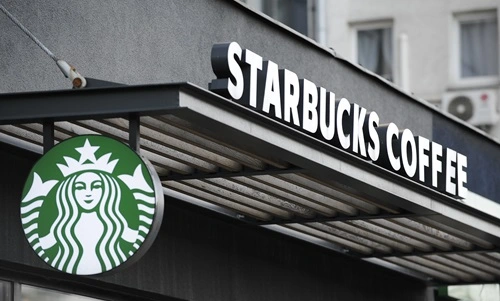Starbucks, the world-renowned coffeehouse chain, is synonymous with premium coffee, a sophisticated ambiance, and an unparalleled café experience. Since its entry into India in 2012 through a partnership with Tata Global Beverages (now Tata Consumer Products Limited), Starbucks has established itself as a favorite destination for coffee lovers across the country. For entrepreneurs interested in the food and beverage industry, owning a Starbucks franchise might seem like an exciting and profitable venture.
However, Starbucks in India operates differently compared to many other global markets. In this article, we’ll explore the cost structure, ownership model, and potential opportunities for partnering with Starbucks in India.
Starbucks Franchise Model in India

In India, Starbucks operates under a joint venture between Tata Consumer Products Limited and Starbucks Corporation, known as Tata Starbucks Private Limited. Unlike other franchise models, Starbucks in India does not offer individual franchise opportunities. Instead, all Starbucks outlets are owned and operated by Tata Starbucks.
This business model ensures stringent control over quality, branding, and customer experience, aligning with Starbucks’ global standards. For entrepreneurs, this means there are no direct franchise opportunities. However, there are alternative ways to explore collaboration with the brand.
Estimated Cost of Opening a Starbucks Outlet in India
While Tata Starbucks does not franchise its outlets, understanding the general cost structure for opening a Starbucks-like outlet can provide insight into the level of investment required for such a premium brand. Based on Starbucks’ global practices and comparable models, here’s an estimate:
Initial Investment
- Setup and Infrastructure Costs: Establishing a Starbucks-quality café requires substantial investment in high-end interiors, state-of-the-art coffee-making equipment, and premium furnishings. These costs can range from ₹1.5 crores to ₹2.5 crores, depending on the location and size of the café.
- Real Estate Costs: Prime locations such as malls, high streets, or IT hubs are essential for attracting the target demographic. Renting or purchasing such spaces can cost anywhere from ₹10 lakhs to ₹30 lakhs per month, depending on the city and locality.
- Licensing and Permits: Securing the necessary food and beverage licenses, fire safety approvals, and municipal permits can add another ₹5-10 lakhs.
Recurring Costs
- Staff Salaries: Employing skilled baristas and customer service staff can cost ₹4-8 lakhs per month, depending on the outlet’s size and location.
- Raw Materials: High-quality coffee beans, milk, syrups, and food items are key to maintaining the brand’s reputation. Monthly procurement costs typically range between ₹3-5 lakhs.
- Marketing Contributions: While Starbucks handles national-level marketing, local promotions may require additional investment.
Challenges of Owning a Starbucks-Like Café in India
- No Individual Franchising: Since Starbucks does not offer direct franchises in India, individuals cannot operate a Starbucks outlet independently.
- High Investment: Operating a premium coffeehouse requires significant initial and recurring investments, making it challenging for small-scale entrepreneurs.
- Operational Expertise: Maintaining the quality and experience associated with a global brand like Starbucks demands extensive training and strict adherence to operational standards.
- Market Competition: The Indian café market is highly competitive, with brands like Café Coffee Day, Blue Tokai, and Third Wave Coffee Roasters offering strong alternatives.
Alternative Opportunities with Starbucks in India
Although direct franchising is not an option, entrepreneurs can explore other opportunities to partner with or benefit from Starbucks’ presence in India:
- Real Estate Partnerships: If you own commercial property in prime locations, you can lease it to Tata Starbucks, which is always looking for premium spaces for its outlets.
- Supply Chain Collaboration: Businesses that supply high-quality raw materials, such as coffee beans, milk, or baked goods, can explore partnerships with Tata Starbucks.
- Franchise with Comparable Brands: If your goal is to own a café franchise, consider other premium coffee brands or QSR chains that offer franchising opportunities in India.
Profitability of Starbucks in India
Starbucks outlets in India primarily target affluent consumers and urban millennials who value the premium café experience. This positioning allows for high revenue generation. Here’s a breakdown of the profitability factors:
- Revenue: A Starbucks outlet in a high-traffic area can generate monthly revenues ranging from ₹20 lakhs to ₹50 lakhs.
- Profit Margins: After accounting for operational costs, profit margins typically range between 10-15% for similar premium café models.
- Customer Retention: Starbucks’ loyalty programs, ambiance, and consistent quality ensure a steady customer base, enhancing long-term profitability.
Starbucks’ Expansion in India
Tata Starbucks is aggressively expanding its presence in India, focusing on tier-1 and tier-2 cities. By the end of 2025, Starbucks aims to open over 500 outlets across India, signaling its confidence in the country’s growing café culture. This growth also opens up indirect opportunities for entrepreneurs in sectors like real estate, logistics, and food supply.
Key Takeaways for Aspiring Entrepreneurs
- No Direct Franchising: Starbucks India operates under Tata Starbucks, so individual franchises are not available.
- Explore Alternatives: Consider partnerships in real estate, supply chain, or with other premium coffee brands.
- Evaluate Market Potential: The Indian café market is growing rapidly, and establishing a premium coffeehouse requires strategic planning and substantial investment.
Conclusion
Owning a Starbucks franchise in India may not be possible due to its joint venture model, but entrepreneurs can still explore other avenues to collaborate or invest in the booming café market. By understanding the cost structure, market dynamics, and alternative opportunities, you can carve a niche in India’s growing coffee culture. Whether it’s through real estate, supply chain partnerships, or investing in comparable brands, there are multiple ways to benefit from the Starbucks phenomenon in India.
Anantha Nageswaran is the chief editor and writer at TheBusinessBlaze.com. He specialises in business, finance, insurance, loan investment topics. With a strong background in business-finance and a passion for demystifying complex concepts, Anantha brings a unique perspective to his writing.


